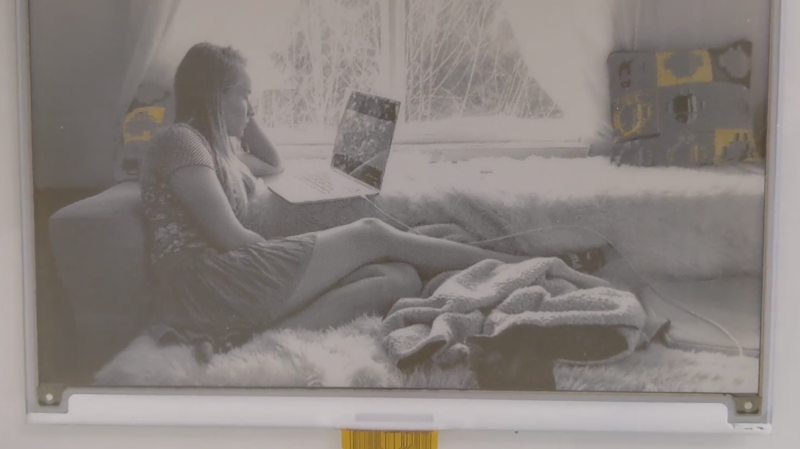Over the last decade or so, e-ink price tags have become more and more ubiquitous, and they’ve now reached the point where surplus devices can be found inexpensively on various websites. [Dmitry Grinberg] found a few of these at bargain-basement prices and decided to reverse engineer and hack them into monochrome digital picture frames.
Often, the most difficult thing about repurposing surplus hardware is the potential lack of documentation. In the two tags [Dmitry] hacked, not only are the labels not documented at all, one even has an almost-undocumented SoC controlling it. After some poking around and some guesswork, he was able to find connections for both a UART and an SWD debugging interface. Fortunately, the manufacturers left the firmware unprotected, so dumping it was trivial.
Even with the firmware dumped, code for controlling peripherals (especially wireless devices) is often inscrutable. [Dmitry] overcomes this with a technique he calls “Librarification” in which he turns the manufacturer’s firmware into libraries for his custom code. Once he was able to implement his custom firmware, [Dmitry] developed his own code to wirelessly download and display both gray-scale and two-color images.
Even if you’re not interested in hacking e-ink tags, this is an incredible walk-through of how to approach reverse-engineering an embedded or IoT device. By hacking two different tags with completely different designs, [Dmitry] shows how to get into these systems with intuition, guesswork, and some sheer persistence.
If you’d like to see some more of [Dmitry]’s excellent reverse-engineering work, take a look at his reverse-engineering and ROM dump of the PokeWalker. If you’re interested in seeing what else e-ink tags can be made to do, take a look at this weather station made from the same 7.4″ e-ink tag.















Wow, this is a cool hack. And a cool technique, turning the original firmware into a library. I assume the author most have some degree of eink experience to be able to figure out grey luts for a completely unknown display…
Hopefully the author submits some of his sdcc improvements upstream.
None. My first time working with eInk :)
Took a lot of time reading the patents and reviewing my physics classes about movement though viscous liquids.
A very good read!
And the author accurately points one thing: Marvell are first-class assholes.
Additionally, check Aaron’s impressive work on making a base station working with the tag stock firmware, based on esp32. https://github.com/atc1441/E-Paper_Pricetags and a nice hands on with Dave https://youtu.be/pRoFim3Egss
I think your CC1110 board is the same I used for a project turning this into a little SDR with rfcat: https://github.com/donnm/rfcat
PS, comments do not work on your site. Solved captcha just begets more captcha.
Comments should work. People keep leaving them. Possibly recaptcha being broken for some cases